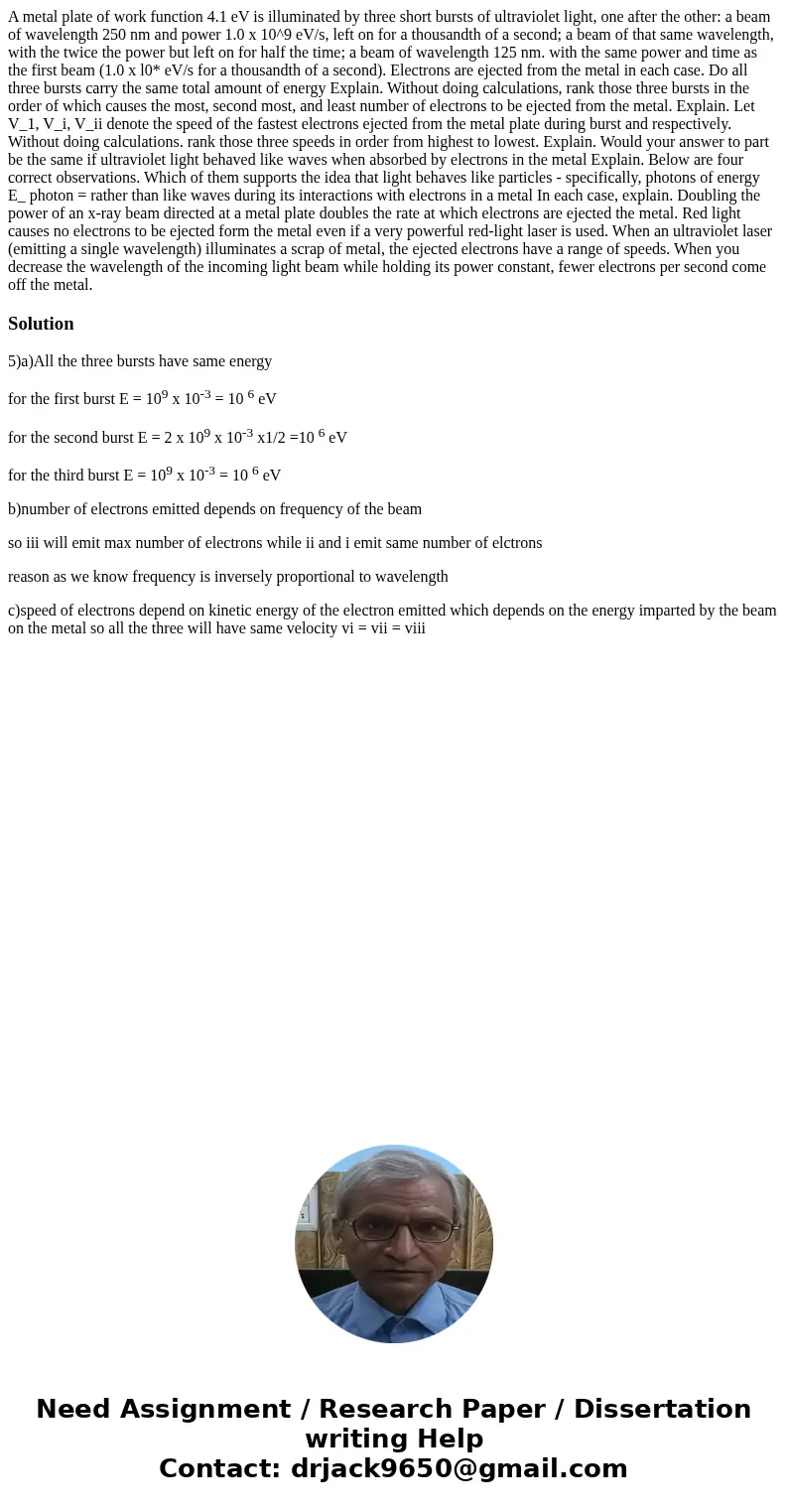A metal plate of work function 41 eV is illuminated by three
A metal plate of work function 4.1 eV is illuminated by three short bursts of ultraviolet light, one after the other: a beam of wavelength 250 nm and power 1.0 x 10^9 eV/s, left on for a thousandth of a second; a beam of that same wavelength, with the twice the power but left on for half the time; a beam of wavelength 125 nm. with the same power and time as the first beam (1.0 x l0* eV/s for a thousandth of a second). Electrons are ejected from the metal in each case. Do all three bursts carry the same total amount of energy Explain. Without doing calculations, rank those three bursts in the order of which causes the most, second most, and least number of electrons to be ejected from the metal. Explain. Let V_1, V_i, V_ii denote the speed of the fastest electrons ejected from the metal plate during burst and respectively. Without doing calculations. rank those three speeds in order from highest to lowest. Explain. Would your answer to part be the same if ultraviolet light behaved like waves when absorbed by electrons in the metal Explain. Below are four correct observations. Which of them supports the idea that light behaves like particles - specifically, photons of energy E_ photon = rather than like waves during its interactions with electrons in a metal In each case, explain. Doubling the power of an x-ray beam directed at a metal plate doubles the rate at which electrons are ejected the metal. Red light causes no electrons to be ejected form the metal even if a very powerful red-light laser is used. When an ultraviolet laser (emitting a single wavelength) illuminates a scrap of metal, the ejected electrons have a range of speeds. When you decrease the wavelength of the incoming light beam while holding its power constant, fewer electrons per second come off the metal. 
Solution
5)a)All the three bursts have same energy
for the first burst E = 109 x 10-3 = 10 6 eV
for the second burst E = 2 x 109 x 10-3 x1/2 =10 6 eV
for the third burst E = 109 x 10-3 = 10 6 eV
b)number of electrons emitted depends on frequency of the beam
so iii will emit max number of electrons while ii and i emit same number of elctrons
reason as we know frequency is inversely proportional to wavelength
c)speed of electrons depend on kinetic energy of the electron emitted which depends on the energy imparted by the beam on the metal so all the three will have same velocity vi = vii = viii

 Homework Sourse
Homework Sourse